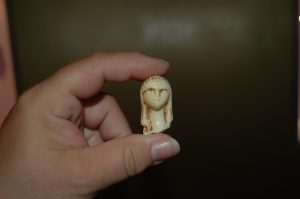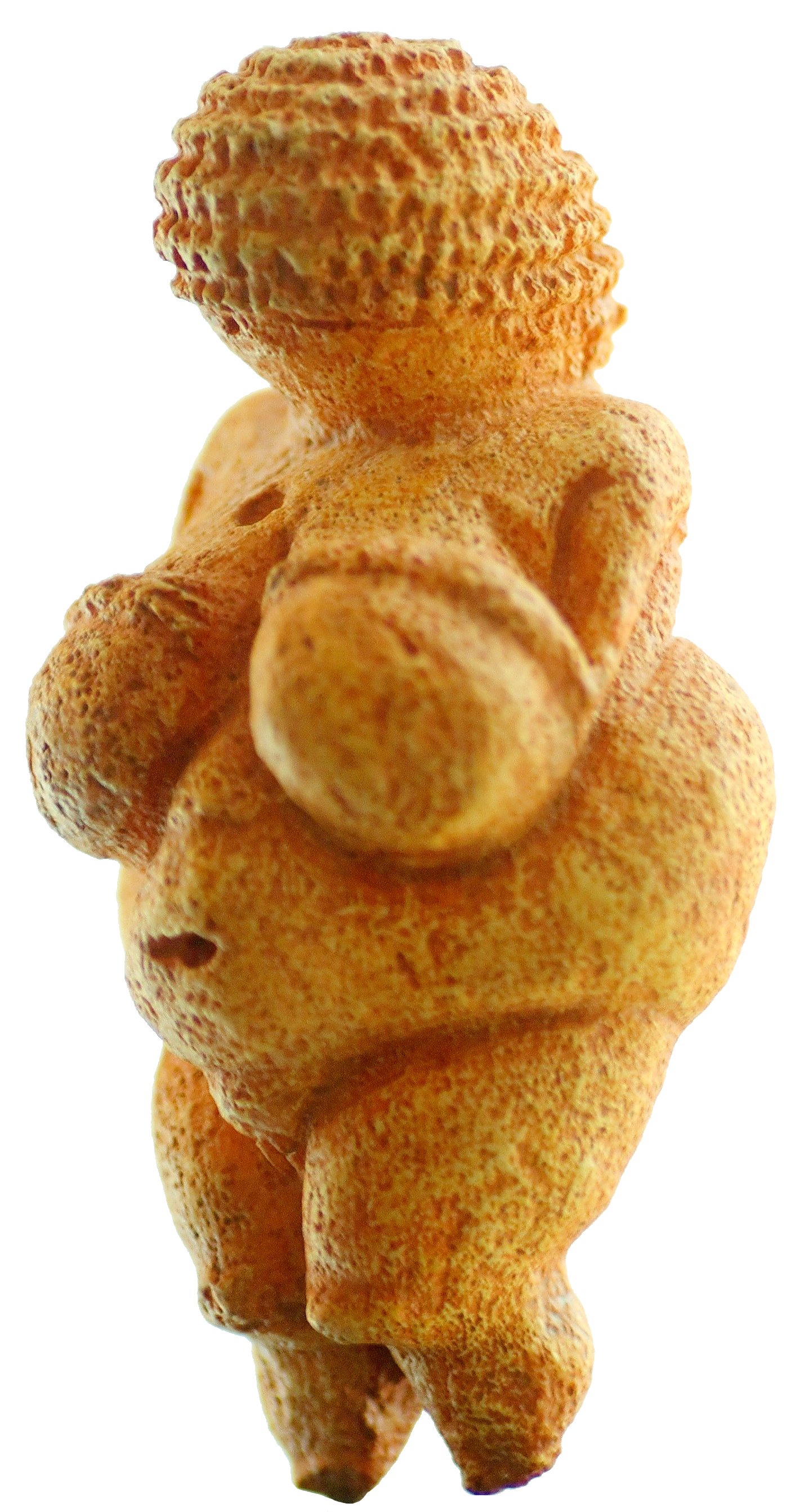2 Chapter 1.2: Introduction to Paleolithic Art
INTRODUCTION TO PALEOLITHIC ART

Around 40,000 BCE, our ancestors, homo sapiens sapiens, began to create art on a more systematic basis. Despite the great need for food and shelter humans set aside time to carve, engrave, and paint. The following videos provide general information on the types, subjects, and style of art made in the prehistoric period. Although there are some references to Neolithic art and society, the related questions pertain to Paleolithic art.
During the period covered in this class art was never made as art for art’s sake. It had an important function in society and is part of the material culture of a civilization. As such it can convey much information about the society that produced it. The visual arts can be an important entry point for understanding a society’s beliefs, values, and culture.
Right: The Löwenmensch figurine has been interpreted as evidence of a therianthropic (believing in the ability of humans to metamorphose into animals) culture which practiced shamanism. A similar figure, also a human with a lion head, was later discovered in another cave in the same region, leading archaeologists to posit whether the two areas were part of the same cultural and religious tradition.
To find out more about this enigmatic sculpture, and what it can teach us about the culture that produced it, see: “The Lion Man: An Ice Age masterpiece,” from The British Museum.
Artstor Paleolithic art gallery for UNO students:
Follow this link for a curated gallery of Paleolithic art in Artstor. This gallery is only available to UNO students. If you are off-campus you will be prompted to log in. For a refresher on tops to using Artstor for research, visit the UNO Libraries Libguide: Using Artstor to Find Images.
Paleolithic Art TASK 1
After watching each of the videos below, please answer the questions that accompany them.
Stone Age Art History
Paleolithic Art TASK 1 Prompts:
What types of art were produced in this period? Give examples of each.
What themes or subjects appear (this is related to both cave painting and sculpture)?
Describe how artists employed different perspectives in rendering animals and the purpose for doing this.
Paleolithic Art TASK 2:
Paleolithic Art Overview
Paleolithic Art TASK 2 prompts:
In several places in this video the narrator talks about the difficulties artists faced creating art. Provide some examples of these challenges. What do the great efforts put forth to make these works suggest?
How does the narrator characterize the depiction of the animals in cave paintings and what does it say about the knowledge the artists had of them?
PALEOLITHIC SCULPTURE
One of the main art forms in the Upper Paleolithic period was sculpture. The term statuette or figurine might be more apt since most of the sculpted figures are small in scale. For example, the head of the Venus of Brassempouy, below, is a mere 1.43 inches high, .86 inches deep and .74 inches wide. It is one of the oldest known realistic representations of a human face.


Paleolithic Sculpture TASK
The following video introduces the main categories of sculptures in this period. After watching the video, please respond to the accompanying questions.
How everything started: Prehistoric Sculpture
Paleolithic Sculpture TASK prompts:
List the four categories of Paleolithic sculpture and under each provide the name of the example given.
Why were certain subjects, such as the female figure and animals, common subjects during the Paleolithic period?
What do anthropomorphic and zoomorphic describe?
WOMAN “VENUS” FROM WILLENDORF
In the video on Paleolithic sculpture, you learned that prehistoric humans carved images of female figures. Instead of examining all types of sculpture or even one category, this section examines one example. The Woman from Willendorf – often referred to as the “Venus” of Willendorf – is one of the most famous sculptures from the Paleolithic period and currently resides in the Naturhistorisches Museum in Vienna, Austria.
The question of the possible function of the Woman from Willendorf has perplexed scholars for centuries. In the absence of documentation, archaeologists and scholars of ancient art must offer hypotheses based on the date and appearance of the object and other material remains. The sources on the Woman from Willendorf below not only examine the meaning of the work, but they also touch upon the field of archaeology, the dating of objects, and the question of object or artifact.
Woman from Willendorf TASK 1
For this segment of the class, you will watch two videos and read one short article on the Woman from Willendorf. While there is some overlap in the content of these sources, each offers a unique perspective. The repetition of information among the sources will help reinforce the concepts presented. You can access the article “Venus of Willendorf” from Khan Academy by clicking here.
Accessible Art History – Venus of Willendorf
Venus figurines: What do they mean? by Stefan Milo
Woman from Willendorf TASK 1 prompts:
Describe the differences between art and artifact (both)
- Is Woman from Willendorf art? (Khan)
- Who discovered Woman and where (all – spellings given in Venus figurines)
- The development of archaeology as a field (Accessible Art History)
- Typical forms of Upper Paleolithic art (Khan)
- Methods of dating (Accessible and Khan)
- Relative dating (Khan)
- Suitability of name Venus for woman figurines (all)
- Size, materials, dominant characteristics of object (all)
- One theory not related strictly to fertility (all sources)
More on The Woman from Willendorf:
“What Did the Venus of Willendorf Originally Represent?” by Joshua Learn, Discover Magazine.
Discusses the influence of patriarchal assumptions of male creation of these figurines on how they were interpreted.

